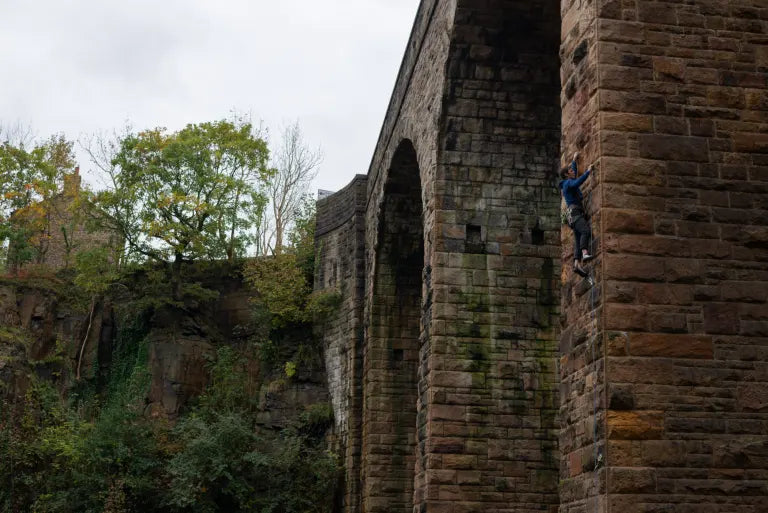
A Climbing Mind: Harnessing the power of change in your brain
Share
words by Allan Evans.
Nature and nurture
As a counsellor most of my learning has predominantly been in psychology, however as I have grown in my practice, I have gained more interest in the biological aspect of the mind.
The nature vs nurture argument has been a long running debate, which in my humble opinion, as well as some experts, is that it’s not a case of one or the other, but an intertwining of both. As I began to take an interest in the teachings of neuroscientists and neurobiologists, a term kept appearing, neuroplasticity.
A google search led me to a Guardian article featuring Norman Doidge a psychiatrist who has written a number of books about neuroplasticity, what I read honestly blew my mind. I purchased and read his book ‘the brain that changes itself’, which blew my mind further.
What is Neuroplasticity?
In this article I’m going to give a basic example of what neuroplasticity is and summaries some of the information from his book and other sources, as well as some personal experience that will hopefully demonstrate the power of understanding this incredible function that our brains perform from the day we are born, right up until the day we die.
In essence neuroplasticity is quite simply the fact that the brain ‘can change itself’
For many years it was believed that certain parts of the brain controlled certain functions, such as sight, hearing, language, etc. While this is true to some degree, it was discovered through various experiments that our brains can change what part of the brain serves what function. An example being if someone lost their sight the brain has no reason to save that section of the brain for visual processing and will therefore use it for something else, like hearing or touch, which explains why it’s long been said that people without certain senses have other senses enhanced, it’s actually more that they have greater computing power for those senses.
It does this by creating new neural pathways, in the example of someone losing their sight, the neural pathways that had been created from birth will stop firing and the brain maps that had been created will weaken, giving space for new pathways and maps to form in that region of the brain. A term that’s used in the book is ‘neurons that fire together, wire together’. Meaning that they will create a strong bond. None of us remember learning to walk or talk, but when we were doing so new neural pathways were being created, those bonds are so strong now that unless we are walking on difficult terrain, we no longer need to make a conscious effort to walk.
Creating neural pathways
So how can we apply neuroplasticity to climbing? Depending on where you are on your climbing journey will of course play a factor, but the biggest thing you can do to improve your climbing, well is to climb more. Yes, I realise I’m not releasing some big secret here and many a trad dad will have preached this before me. But I think this is an important message to emphasise to new climbers, don’t worry about the fanciest shoes, or the chalk, or the training to be strong. Just climb as much as you can, create those neural pathways and make them strong through repetition. As I truly believe this will make the biggest difference and I feel this is applicable to all activities.
For the more experienced climber neuroplasticity can still play a role, the biggest one being visualisation, again nothing new here, but some people may not give visualisation much merit, because surely how does that work. Well in 1995 an experiment was conducted where a scientist got two groups who had never played the piano before. One group was asked to practice playing the piano and one group to just imagine playing the piano. Scans of the brain showed very similar neurological activity, where new brain maps were formed. The craziest part of this experiment was that both groups showed muscular strength growth, with the imagination group only being fractionally less than those that played.
So just imagining something can make you stronger.
Arguably the best technical climber in the world is Adam Ondra, for anyone who has watched ‘Age of Ondra’ was
probably quite amused to watch his very dynamic visualisation techniques, I know I was. However, every time he performed those acts, he was making both his mind and body stronger for his projects. No one can argue with the results.
My own experience of neuroplasticity with climbing would be that over the past couple of years I haven’t climbed or trained for climbing as much as I had in previous years, I know I don’t feel as physically strong as I used to, but when I do climb, I’m still climbing at pretty much the same grade level as I was before. I feel this because I have formed brain maps that are strong enough, so I know how to perform certain moves, hold certain holds, or place a
foot etc. I’ve often heard climbers say they aren’t good on slopers, or overhangs etc and they therefore don’t climb them, well it’s likely that certain styles of climbing don’t suit them because they haven’t formed strong neural pathways for those styles due to not climbing them.
Don’t be set in your ways
Neuroplasticity is like a muscle it’s stronger the more it’s used it’s therefore beneficial to promote its abilities by learning new things, whether that’s a different style of climbing or a completely different activity, it will strengthen your neuroplasticity for your preferred climbing, so it’s therefore a good reason to do what you aren’t as good at. I hope that this brief overview of neuroplasticity has been beneficial to you in some way, what I loved learning about this unique ability we have is how hopeful it is and that despite
how we may feel, we can change.




